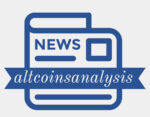The digital revolution has transformed how we live, work, and interact with the world around us. However, our physical infrastructure, the backbone of our modern societies, has largely remained tethered to centralized, often antiquated systems. This is where the Decentralized Physical Infrastructure Network (DePIN) narrative emerges, proposing a radical shift in how we manage and utilize critical physical resources.
At its core, a DePIN is a network of physical infrastructure assets, like sensors, actuators, and computing units, governed by blockchain technology. This means ownership, data collection, and decision-making are distributed among network participants, fostering transparency, trust, and efficiency. Imagine a network of intelligent sensors monitoring energy grids, roads, or environmental conditions, not beholden to a single entity but empowered by a collective of stakeholders.
The potential benefits of DePINs are manifold. Increased transparency can combat corruption and mismanagement, while distributed decision-making can lead to more efficient resource allocation and utilization. Additionally, DePINs can incentivize investment and participation in infrastructure development, particularly in underserved areas. For instance, imagine a DePIN-powered irrigation system in a remote village, where farmers collectively manage water resources and data, optimizing crop yields and water usage.
However, DePINs also face challenges. Integrating existing infrastructure with blockchain technology requires significant technological advancements. Furthermore, ensuring secure and reliable data transmission across geographically dispersed networks is paramount. Finally, fostering collaboration and trust among diverse stakeholders is crucial for DePINs to thrive.
IOTA: A Leading Contender in the DePINs Arena
Enter IOTA, a revolutionary distributed ledger technology specifically designed for the Internet of Things (IoT) and machine-to-machine (M2M) communication. IOTA’s unique features position it as a prime candidate for powering DePINs.
Firstly, IOTA eliminates the need for transaction fees, a critical factor for resource-constrained IoT devices. Its feeless microtransactions enable seamless data exchange and value transfer within DePINs, facilitating micropayments for data access or resource usage.
Secondly, IOTA’s Tangle, a directed acyclic graph (DAG) structure, scales efficiently with network size. Unlike traditional blockchains, where transaction processing slows down as the network grows, IOTA’s Tangle ensures fast and secure data transmission even in large DePINs.
Furthermore, IOTA’s focus on data security and privacy aligns perfectly with DePINs’ requirements. Its strong cryptography and distributed nature protect sensitive infrastructure data from unauthorized access or manipulation.
Finally, IOTA fosters a collaborative ecosystem through its various initiatives and partnerships. The IOTA Foundation actively supports DePIN development through research grants and hackathons, while collaborations with industry players like Bosch and Jaguar Land Rover showcase IOTA’s real-world applicability.
In conclusion, DePINs represent a transformative approach to managing physical infrastructure, promising greater transparency, efficiency, and democratization. While challenges remain, IOTA, with its feeless transactions, scalable Tangle, and focus on security and collaboration, emerges as a powerful contender to lead the charge in this new frontier. By harnessing IOTA’s potential, DePINs can unlock a future where our physical infrastructure is no longer a monolithic entity but a vibrant, interconnected network, serving the needs of people and the planet in a sustainable and equitable manner.




